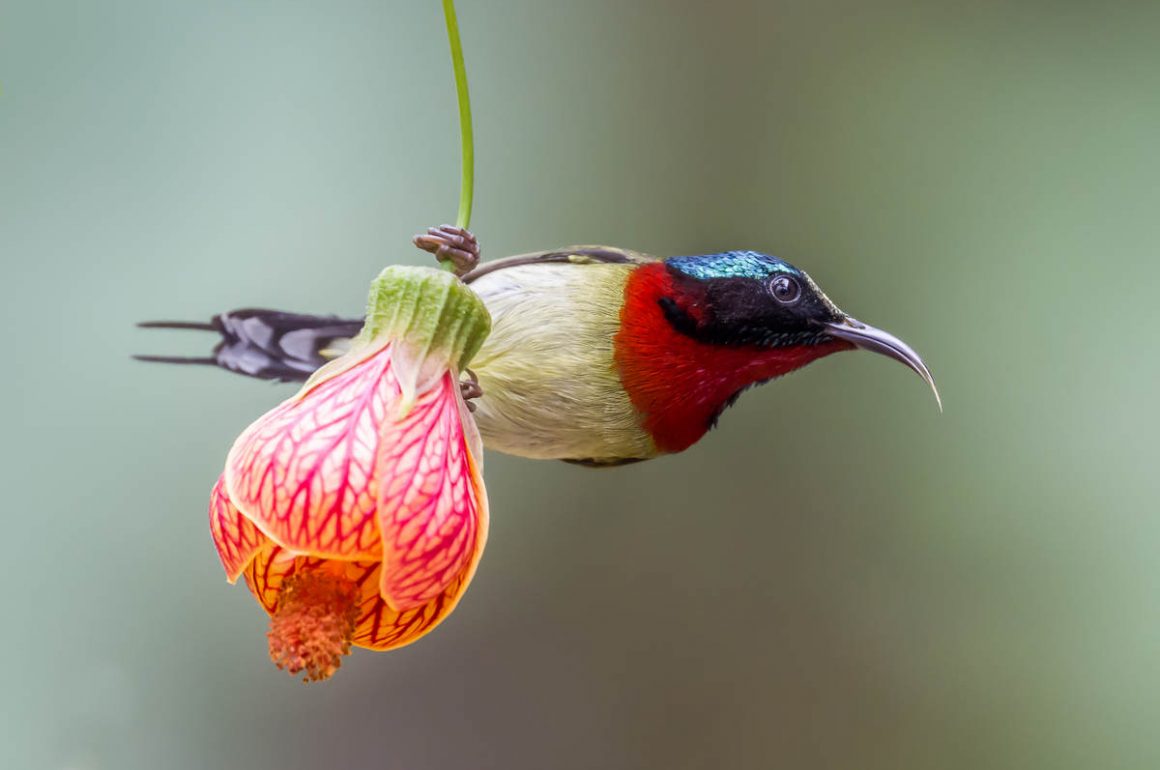
As in large parts of its range, the Fork-tailed Sunbird is the only common sunbird at Nonggang, Guangxi, where the photos in this post were taken.
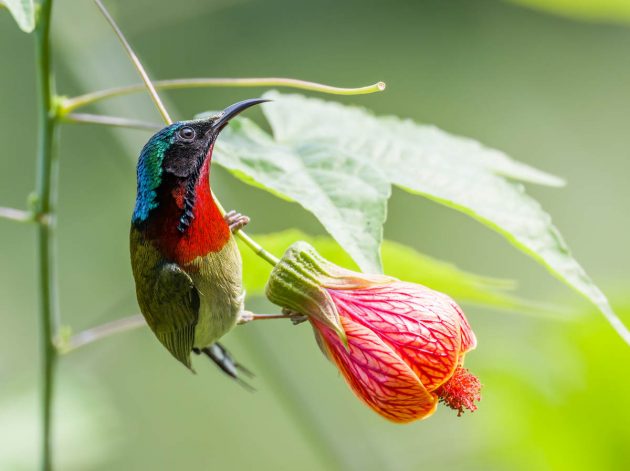
Getting the photos is not difficult – just wait next to a suitable flowering plant, and a sunbird will show up every 15 minutes or so. Though I have not had a chance to take photos of hummingbirds yet, it is likely that sunbirds are the more photographer-friendly species as they sometimes perch to feed rather than hover.
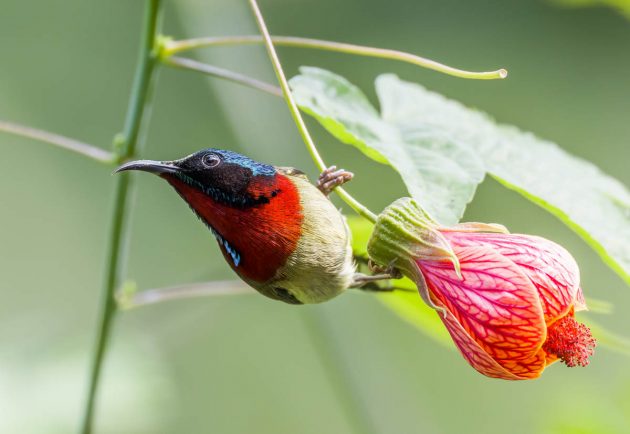
Both male sunbirds and their American equivalent, male hummingbirds, are often very colorful and attractive – possibly an indication of convergent evolution (similar pressure on the males resulting from the females’ desire to mate with smart-looking males).
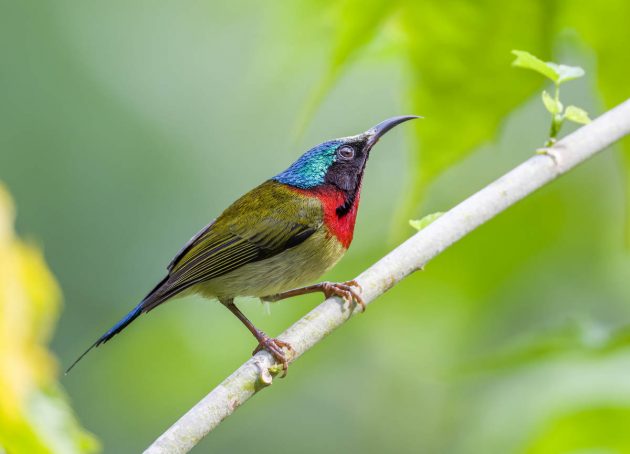
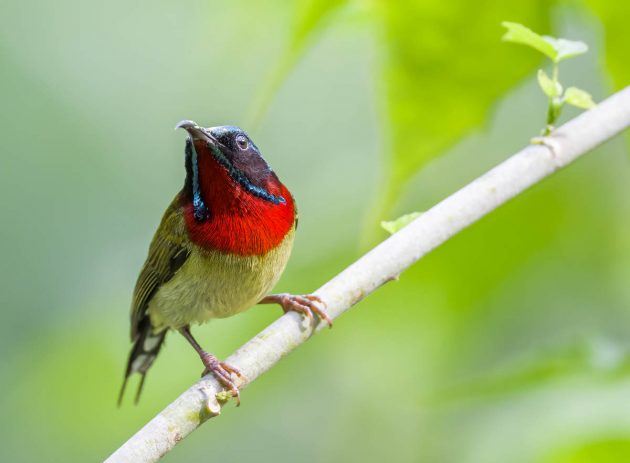
A female: no forked tail, not much color. No wonder that in the past, sunbird parents often preferred male chicks.
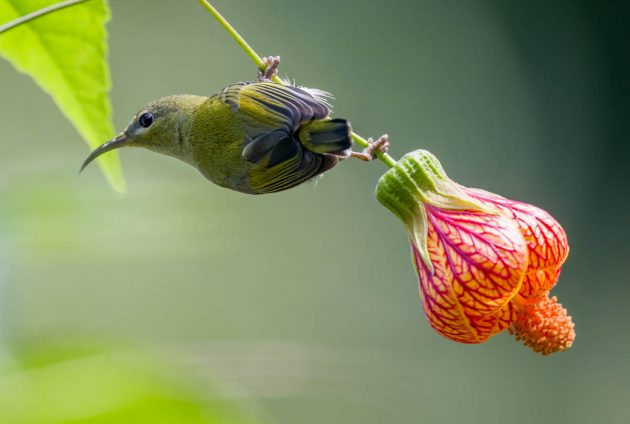
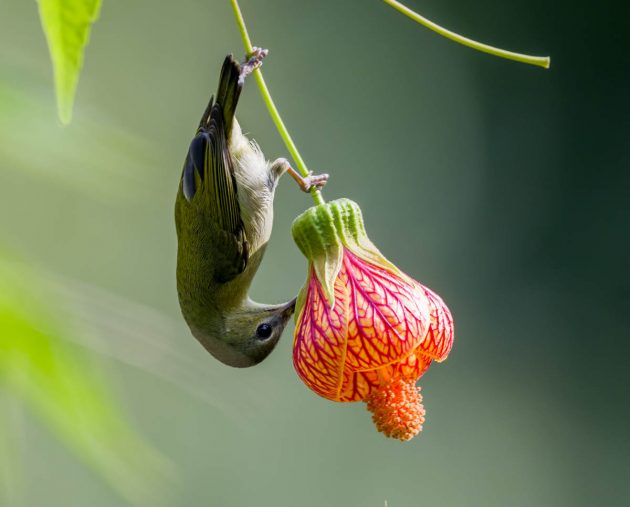
Similarly, both bird families have a distinct significance for humans.
“The Aztecs recognized in the hummingbird all the attributes necessary to be a good warrior and this bird became the main symbol of their principal god… who guided them through a journey to a promised land” (source).
Sunbirds (though Olive-backed ones, not Fork-tailed) are among the bird species depicted in reliefs of the Indonesian Borodur Temple built around 750-850 AD, representing “a symbol of humans who went on a spiritual journey and carried out the learning process” (source) – which sounds rather cringeworthy to me but presumably not to many other people.
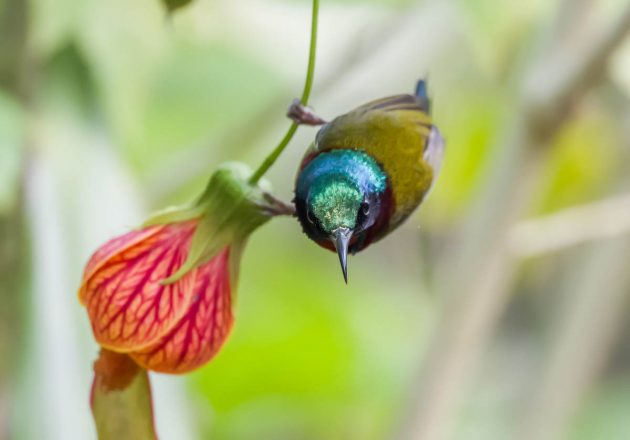
In general, it seems sunbirds are doing a bit better in co-existing with humans than many other families. It helps that they do not have a pleasant song and are somewhat difficult to keep as cage birds.
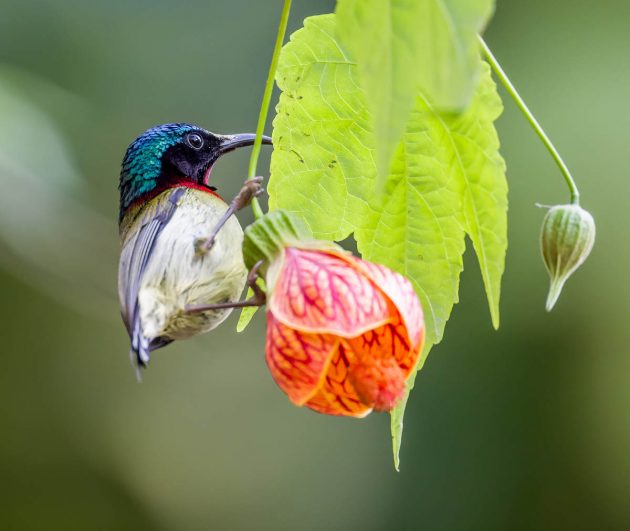
And even now, new species of sunbirds are being discovered – though admittedly of the “they look pretty much exactly the same but somehow they are different” variety that does not do that much for me as a photographer rather than a genuine ornithologist.
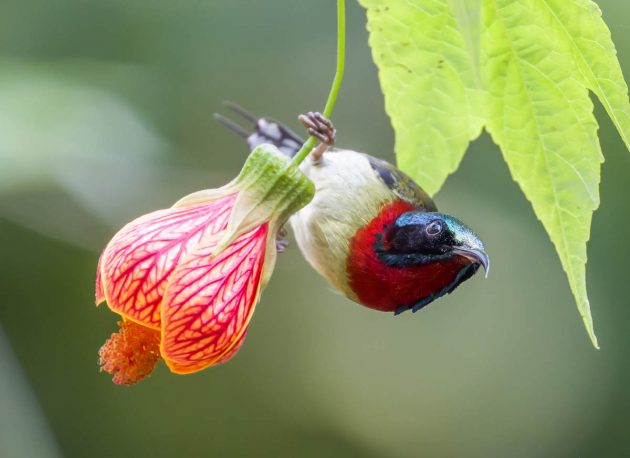
The Fork-tailed Sunbird has the somewhat unfortunate Latin name of christinae, the culprit presumably being the discoverer of the species, Robert Swinhoe, who thought it a good idea to name a bird after his wife Christina.
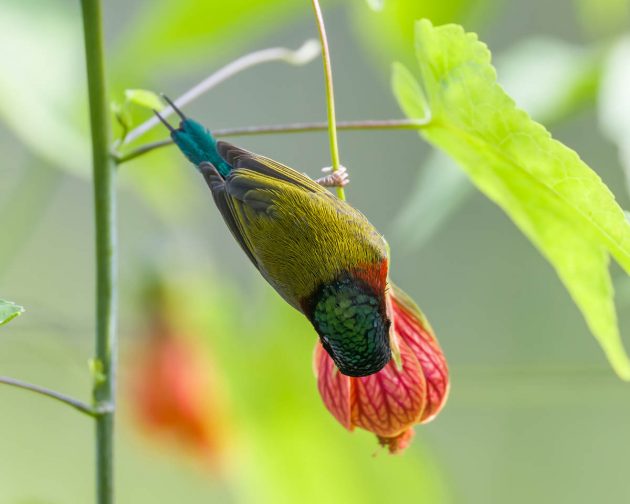
On the other hand, maybe that name is still better than the English name – according to one source, “No sunbirds possess truly forked tails, even the fork-tailed sunbird … acquires its name from central tail feathers that are stretched out into a forked shape”. False advertising everywhere.
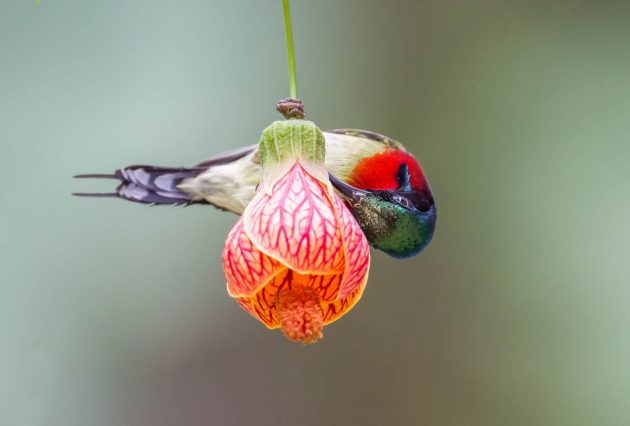
The species is an important pollinator for some plants (source), particularly in cold weather, when bees are too lazy (source).
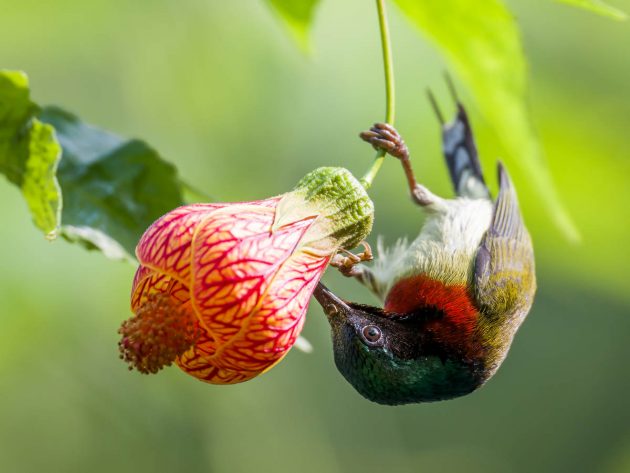
There also is an interesting study comparing the breeding behavior of this low-altitude species with a similar high-altitude one, the Fire-tailed Sunbird (not shown). Apparently, the Fire-tailed Sunbird copes with the harsher environment by producing fewer eggs and providing more parental care to nestlings – somewhat reminiscent of the choice of Chinese (and other) parents to only have one child.
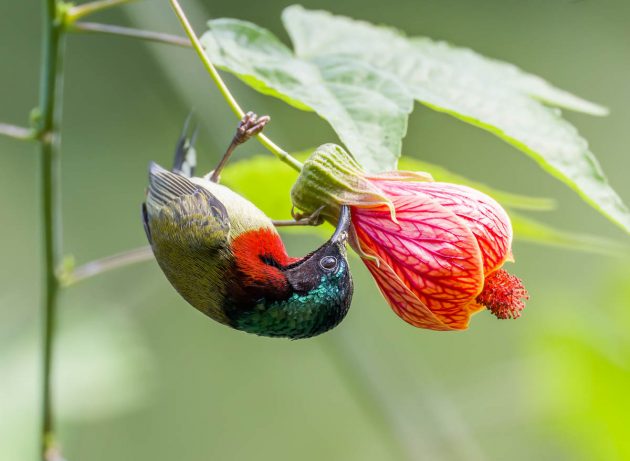













Sunbirds are always compared to the New World’s hummingbird family. But your photos make it clear that they are actually more like the flowerpiercers of South and Central America. These little birds perch on flower stems and use their unique hooked upper mandible to pierce the base of flowers and feed on nectar. Hummingbirds, in contrast, hover by the open flower and go straight through the middle. Do sunbirds pierce the flowers, or do they work their bills through gaps in the petals?
Paul, I think they do both, though the guy on the photo definitely took the illegal route of piercing through the base of the flower, not unlike certain politicians claiming elections have been stolen.
I’ve had the special privilege of having two presidents in separate countries who use that technique. Claiming elections were stolen, that is, not piercing flowers.